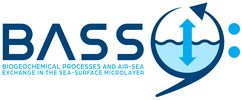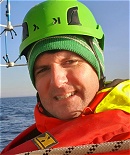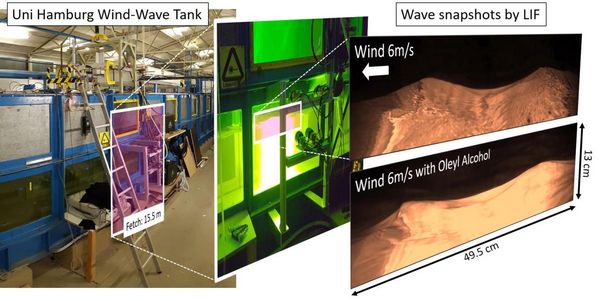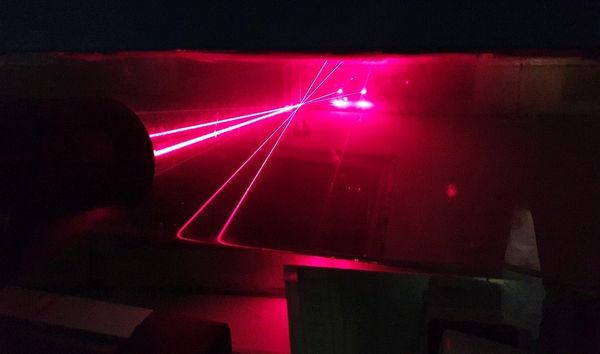BASS SP 2.2
Momentum and energy fluxes in the presence of surfactants
In low to moderate wind conditions, the coupled air-water viscous layers on either side of the SML carry the bulk of the wind stress, which is, in turn, strongly modulated by the surface waves. Dynamic processes at scales of millimeters to a few centimeters are driven by wind stress, and they are of key importance for a deep understanding of SML dynamics and air–sea exchange processes. Monomolecular surface films at the sea surface, which are also referred to as marine monolayers, may cover the (multilayer/micrometer) SML and dampen small-scale surface waves, thereby affecting those exchange processes. While the general effect of monolayers on small-scale surface roughness, wind stress, and gas fluxes is fairly well known, there is still a lack of knowledge about their influence on processes that take place at very short length scales, on the order of millimeters and below. Within SP2.2, we will close this gap through a series of laboratory experiments at the University of Hamburg’s wind-wave tank facility, in which state-of-the-art observation techniques will allow an unprecedented view on small-scale dynamics in the SML and its immediate vicinity.
The relevance to the BASS research unit originates from transport processes into, accumulation processes within, and exchange processes across the SML, which are mainly driven by, and therefore depend on, small-scale dynamics at the sea surface. Understanding those processes requires an in-depth knowledge of the small-scale surface wave and near-surface current fields, along with turbulence patterns both above and below the (dynamic) water surface. Their investigation requires measurements at spatial scales in the millimeter range and below, as well as experiments under controlled (wind and wave) conditions, which can only be achieved in laboratory facilities such as the wind-wave tank of the University of Hamburg. Within this sub-theme, we will investigate small-scale (cm to sub-mm) physical processes at the wavy air–water interface, which modulate and control exchange processes investigated by other SPs, and which are altered by marine monolayers commonly found in coastal waters






